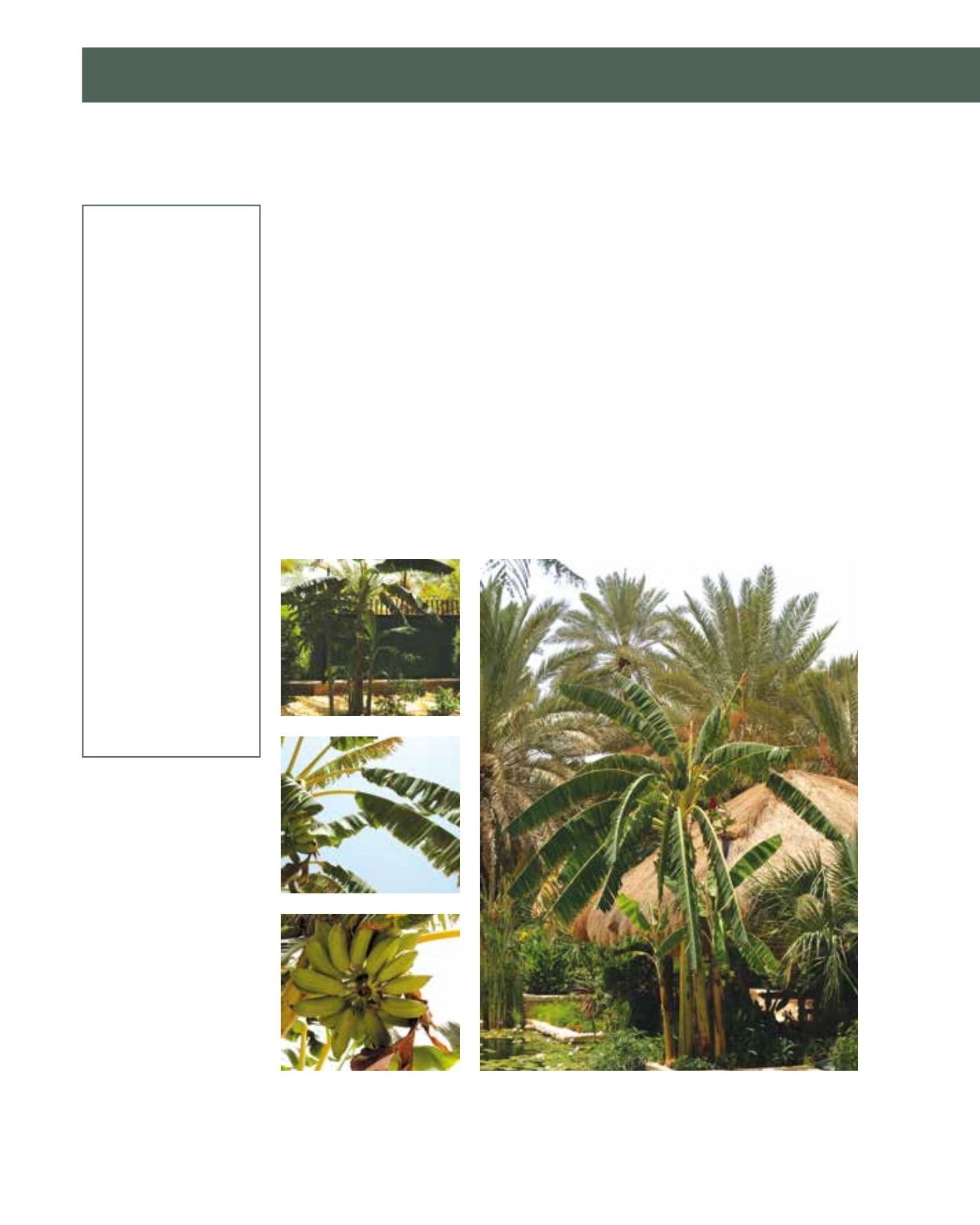

GENERAL
Origin
:
sub-tropical,
tropical
Vigour
:
fast growing
Humidity
:
very humid,
extremely humid
Propagation :
division
Maintenance :
moderate
CONDITIONS
Urban climate :
vulnerable
Dessication :
vulnerable
Stagnant water :
vulnerable
Irrigation
:
high
Salinity/ppm :
low (1000 ppm)
Hardiness
:
0°C
SHAPE
Type
:
shrub, perennial
Height
:
1.5 m-3 m
Spread
:
1.5 m-2.5 m
Foliage
:
evergreen
FLOWER
Colour
:
yellow
Period
:
January -
December
Smell
:
scented, strong,
fruit, sweet,
fruity
FRUIT
Type of fruit :
berry
Fruit size
:
9 cm - 15 cm
Toxicity
:
edible when
processed
The Sweet Banana, or mawz in Arabic, is one of the world’s largest herbaceous plants, which most
people would consider a tree. In fact, the ‘trunk’ consists of combined leaf stalks, usually bet-
ween 2 and 6 metres high. They are hybrids between two wild species, Musa balbisiana and Musa
acuminata. Both parents originate from humid, tropical Asia where the hybrid’s cultivars ‘Dwarf
Cavendish’ and ‘Grand Nain’ still make an important cash crop just as they do in tropical Ameri-
ca. The only way to propagate Sweet Bananas is by separating their offshoots. After flowering and
fruiting, the shoot dies and is followed by new sprouts. In time, a single banana grows into a stout,
decorative clump. Its huge leaves may become 2.7 metres in length and 60 cm wide. Wind easily
splits the spade along its veins, resulting in a frond-like appearance. They look best in locations
protected from wind. The flowerbud resembles a purple heart that opens up numerous tubular
florets between bracts. Along the hanging cluster, tiers are grown with up to 20 fruits each. These
bunches are called ‘hands’, while the individual, yellow fruits are known as ‘fingers’. Since the
banana plants are of tropical descent, they grow flowers and fruit at any time of the year. Com-
mercial growers fear the Panama disease, a fungal infection (Fusarium) that attacks the roots. It
is no serious hazard to private gardens or public parks where Sweet Bananas are often grown for
their ornamental effects. Not frost-hardy, they are often seen in protected areas on farms.
207
Musa x paradisiaca,
Musaceae
Sweet Banana,
mawz
















